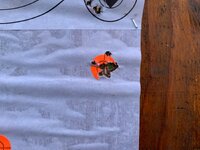All,
I think it’s time I get into the progressive press game. I have spent hours upon hours tediously loading ammo on a single stage. So much so that I have begun buying Hornady Match ammo in bulk for practice. This is not at all a bad solution, however, the lot to lot consistency was absolutely terrible on this last go around.
I would to have my cake and eat it too. I.e., very high quality, consistent and repeatable ammo with minimal reloading effort and maximum shooting time.
The Dillon 550c is perhaps the most highly regarded for what I am seeking to do here. However, the 750/1100 presses are much quicker. If anyone here has had both, am I giving up any precision with the faster options? If so, is it so inconsequential as to not matter?
I think it’s time I get into the progressive press game. I have spent hours upon hours tediously loading ammo on a single stage. So much so that I have begun buying Hornady Match ammo in bulk for practice. This is not at all a bad solution, however, the lot to lot consistency was absolutely terrible on this last go around.
I would to have my cake and eat it too. I.e., very high quality, consistent and repeatable ammo with minimal reloading effort and maximum shooting time.
The Dillon 550c is perhaps the most highly regarded for what I am seeking to do here. However, the 750/1100 presses are much quicker. If anyone here has had both, am I giving up any precision with the faster options? If so, is it so inconsequential as to not matter?


